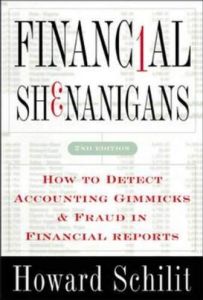Join getAbstract to access the summary!

Join getAbstract to access the summary!
Howard Schilit
Financial Shenanigans
How to Detect Accounting Gimmicks & Fraud in Financial Reports
McGraw-Hill, 2002
What's inside?
Do you know how to spot signs of fraud in your investment’s financial report? Here’s how to watch your back.
Recommendation
Author Howard Schilit writes in surprisingly plain English, and provides the reader with a toolkit to determine what’s so rotten in Denmark - or on Wall Street. You don’t have to be an experienced reader of financial reports to learn a lot from this book. Schilit offers more than theory; he provides specific examples and case studies. Learn about the manager who reduced future expenses by purchasing $12 million worth of advance postage metering at the end of the year. Find out how "Chainsaw Al" Dunlop drove up the price of Sunbeam stock by creating a $35 million reserve, all while laying off 11,000 employees. Learn the inside story of how Enron became the poster child for corporate wrongdoing. getAbstract highly recommends this book to independent investors, and anyone else who needs to understand how unethical execs cook the books. It may not save you from losing a bundle, but at least you won’t feel like you’re in a battle of wits and devoid of weaponry.
Summary
About the Author
Howard M. Schilit is a PhD, with a CPA. He is president of the Center for Financial Research and Analysis (CFRA), an independent research organization, and an authority on detecting accounting gimmicks. A former professor at American University, Schilit has been featured in numerous articles and network appearances, and co-authored Blue Chips and Hot Tips. The first edition of Financial Shenanigans was published in 1993.

















Comment on this summary